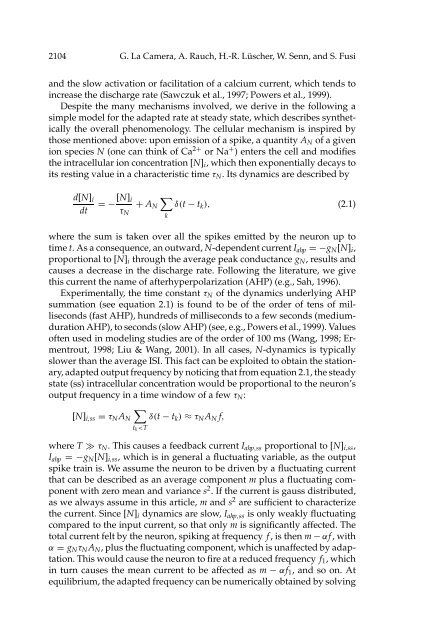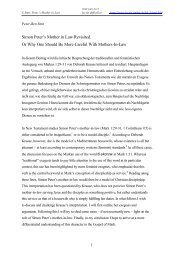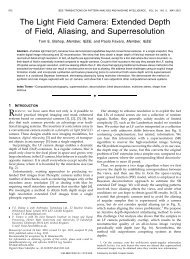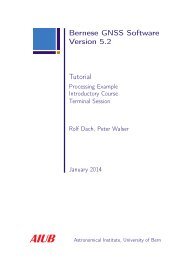Minimal Models of Adapted Neuronal Response to In Vivo–Like ...
Minimal Models of Adapted Neuronal Response to In Vivo–Like ...
Minimal Models of Adapted Neuronal Response to In Vivo–Like ...
You also want an ePaper? Increase the reach of your titles
YUMPU automatically turns print PDFs into web optimized ePapers that Google loves.
2104 G. La Camera, A. Rauch, H.-R. Lüscher, W. Senn, and S. Fusi<br />
and the slow activation or facilitation <strong>of</strong> a calcium current, which tends <strong>to</strong><br />
increase the discharge rate (Sawczuk et al., 1997; Powers et al., 1999).<br />
Despite the many mechanisms involved, we derive in the following a<br />
simple model for the adapted rate at steady state, which describes synthetically<br />
the overall phenomenology. The cellular mechanism is inspired by<br />
those mentioned above: upon emission <strong>of</strong> a spike, a quantity A N <strong>of</strong> a given<br />
ion species N (one can think <strong>of</strong> Ca 2+ or Na + ) enters the cell and modifies<br />
the intracellular ion concentration [N] i , which then exponentially decays <strong>to</strong><br />
its resting value in a characteristic time τ N . Its dynamics are described by<br />
d[N] i<br />
dt<br />
=− [N] i<br />
τ N<br />
∑<br />
+ A N δ(t − t k ), (2.1)<br />
k<br />
where the sum is taken over all the spikes emitted by the neuron up <strong>to</strong><br />
time t. As a consequence, an outward, N-dependent current I ahp =−g N [N] i ,<br />
proportional <strong>to</strong> [N] i through the average peak conductance g N , results and<br />
causes a decrease in the discharge rate. Following the literature, we give<br />
this current the name <strong>of</strong> afterhyperpolarization (AHP) (e.g., Sah, 1996).<br />
Experimentally, the time constant τ N <strong>of</strong> the dynamics underlying AHP<br />
summation (see equation 2.1) is found <strong>to</strong> be <strong>of</strong> the order <strong>of</strong> tens <strong>of</strong> milliseconds<br />
(fast AHP), hundreds <strong>of</strong> milliseconds <strong>to</strong> a few seconds (mediumduration<br />
AHP), <strong>to</strong> seconds (slow AHP) (see, e.g., Powers et al., 1999). Values<br />
<strong>of</strong>ten used in modeling studies are <strong>of</strong> the order <strong>of</strong> 100 ms (Wang, 1998; Ermentrout,<br />
1998; Liu & Wang, 2001). <strong>In</strong> all cases, N-dynamics is typically<br />
slower than the average ISI. This fact can be exploited <strong>to</strong> obtain the stationary,<br />
adapted output frequency by noticing that from equation 2.1, the steady<br />
state (ss) intracellular concentration would be proportional <strong>to</strong> the neuron’s<br />
output frequency in a time window <strong>of</strong> a few τ N :<br />
∑<br />
[N] i,ss = τ N A N δ(t − t k ) ≈ τ N A N f,<br />
t k
















